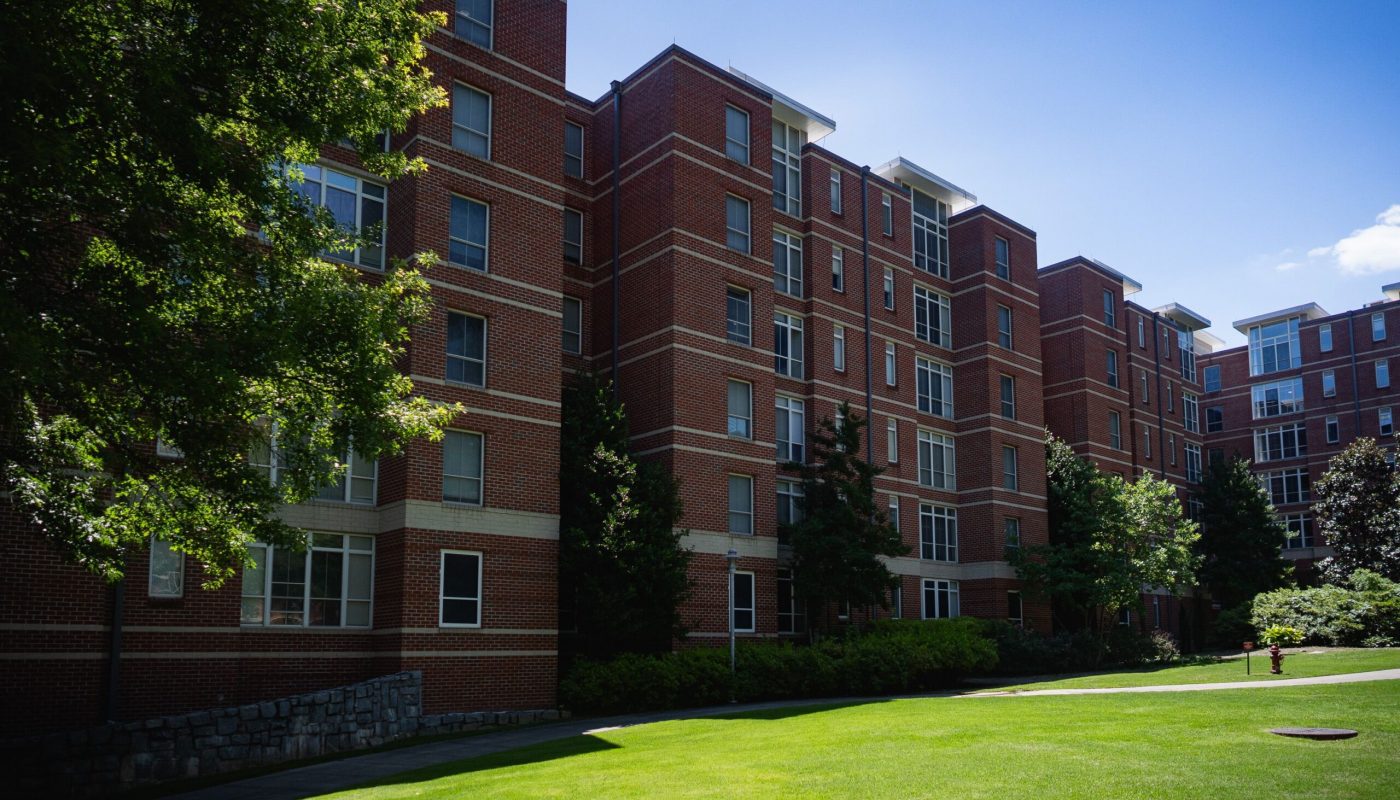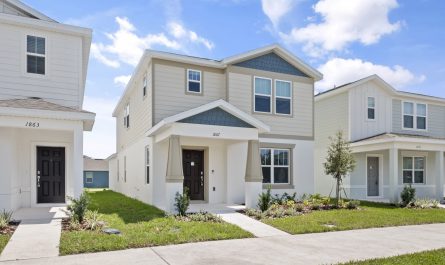Student housing is a dynamic segment of the rental market. It plays a key role in urban landscapes and offers unique investment opportunities. Today, universities attract large numbers of students who seek housing near campus. Investors and landlords must understand specific considerations to succeed in this market. The environment is influenced by shifting demographics, evolving academic needs, and economic trends. In addition, regulatory factors, technology advances, and competition shape the student housing rental market.
Student housing is built to meet the needs of university students. It includes dormitories, apartments, shared houses, and purpose-built rental communities. Investors often focus on properties near educational institutions. These properties can experience seasonal demand. The rental cycle differs from standard residential rentals. In many cases, student housing leases are shorter and coincide with the academic calendar. They may begin and end each semester or academic year. In addition, the rental market is impacted by fluctuating enrollment numbers and changing tuition policies. Investors need to understand these unique characteristics to price rents competitively.
Student housing is subject to different operating challenges. Students tend to have limited rental histories and lower credit scores. They also have unique lifestyle needs. Landlords must offer flexible lease options and include amenities that appeal to young adults. In this way, student housing is distinct from general residential markets. Successful operators design properties that satisfy both institutional requirements and tenant preferences. In turn, this attracts strong occupancy rates even during off-peak seasons.
Market Trends in Student Housing

Student housing has shown resilience in recent years. Demand remains high near major universities. Enrollment growth has increased rental demand. At the same time, many traditional dormitories have phased out. This opens up new investment opportunities in purpose-built student accommodation. The trend toward off-campus housing has accelerated due to changing student lifestyles. More students prefer independent living. They seek privacy, better amenities, and social spaces. As a result, demand for market-rate student housing has grown.
Moreover, technology influences market trends. Online platforms simplify the rental process. Students now research and book housing online. Many landlords use digital marketing to attract tenants. Data analytics and customer relationship management tools help operators predict demand. These tools also enable operators to set optimal rental prices. Consequently, technology is an essential component in the evolution of student housing.
Economic factors also impact the student housing market. A strong local economy can increase disposable income among families. More funds become available for housing expenses. Conversely, economic downturns can affect student enrollment and rental rates. Investors must account for these fluctuations. They need to plan for both high and low market cycles. Adjusting pricing and operating strategies accordingly is vital.
Additionally, government policies and university initiatives shape the market. Some universities partner with private investors to develop student housing. These public-private partnerships help stimulate construction. Subsidies or tax incentives may be offered to boost investment. In some regions, local regulations affect the development and operation of student housing. Awareness of such policies is key to understanding market dynamics.
Factors Affecting Student Housing Rental Rates
There are many factors that affect rental rates in student housing. These factors include location, property features, and market conditions. Landlords must analyze these elements to set competitive rent. First, location is critical. Proximity to campus is the most important factor. Properties near universities command higher rents due to convenience. Public transport, shopping, and entertainment options also influence rates. In densely populated urban areas, competition drives rent upward. Conversely, properties located farther from campus may offer lower rates.
Next, property features greatly affect rental value. Modern amenities, quality furnishings, and high-speed internet are highly valued by students. Facilities such as study rooms, common areas, and fitness centers add appeal. Many investors invest in upgrades to capture premium rents. In contrast, older properties without modern features may require lower rent. Amenities such as laundry, security systems, and maintenance services also matter. The quality and design of a property can justify higher rental prices.
Market conditions and seasonal demand affect rates as well. Student housing is cyclical. Peaks occur at the start of academic terms. Vacancies increase during summer breaks and holidays. Landlords must adjust prices throughout the year. They may offer special promotions or discounts during low-demand periods. Economic cycles also affect student tuition and enrollment. These factors collectively influence rental pricing dynamics.
Furthermore, lease structure and flexibility are important. Many student leases are semester-based. They may have shorter durations and include academic breaks. Flexible lease terms can attract tenants who seek shorter commitments. Some leases offer options for renewal at predetermined rates. Fixed-rate leases give students budget certainty. However, they can limit the operator’s ability to adjust prices during market booms.
Investment Considerations in Student Housing
Investing in student housing requires careful analysis and planning. There are several considerations that distinguish it from traditional rentals. One major factor is the higher turnover rate. Student tenants move in and out every academic cycle. This leads to frequent vacancies and turnover costs. Landlords must budget for cleaning, repairs, and re-advertising units. Efficient property management and quick turnover strategies minimize downtime. Additionally, tenant screening is critical. Since students typically lack extensive rental histories, alternative screening methods may be necessary. Co-signers, parental guarantees, or institutional recommendations can strengthen applications.
Another consideration is the capital expenditure required for student housing. Properties near major universities often command premium prices. Investors must analyze purchase prices and potential rental income. Financing may be more challenging than in traditional residential markets. The use of specialized financing such as property-backed loans or investment partnerships can ease the burden. Moreover, student housing projects may be eligible for tax incentives or public subsidies. These can offset the initial investment and reduce overall expenses.
Furthermore, there is a competitive aspect. Many investors target the same market, which can drive up acquisition costs. Location and property condition become key differentiators. Investors should also study local market trends and demographics. University enrollment figures, graduation rates, and local employment statistics all influence the rental market. An understanding of the economic environment enhances investment decision-making. A well-researched investment has higher chances of long-term profitability.
Tenant Demographics and Their Impact
The demographics of student tenants differ from those of other rental markets. Most student tenants are between 18 and 24 years old. They are usually financially dependent on their parents. As a result, affordability is a major concern. Rent must be priced at levels that are within reach of student budgets. Landlords may consider offering furnished units and flexible lease terms. Furnished accommodations justify higher rents if the convenience factor is high. However, many students prefer affordable options that allow them to save money. Market segmentation is common. Some properties target international students while others cater to local residents. Each segment has different demands, and rent levels vary accordingly.
Additionally, student tenants have unique lifestyle needs. They often require fast internet, study areas, and community spaces. The presence of recreational amenities such as game rooms or common lounges can enhance tenant satisfaction. Landlords must design properties that appeal to modern student lifestyles. Proximity to public transport and shopping centers is a bonus. Safety is also a top concern for students and their families. Properties with secure entries and on-site security tend to attract more tenants. Understanding these demographic factors is key to setting the right rental rates and marketing your property effectively.
Lease Structure in Student Housing
Lease structure is central to the student housing rental market. Leases in this market tend to be short-term. They often align with the academic calendar. This means that most leases last for 9 to 10 months with a break during the summer. Some properties may offer year-round occupancy with flexible terms. Short-term leases lead to higher turnover rates. However, they offer flexibility to both landlords and tenants. Landlords may raise rents more frequently if market conditions allow. On the other hand, fixed-term leases provide stability and predictable income for the landlord.
In many cases, landlords include incentives for lease renewals. These incentives can include reduced rent or waived fees for staying longer. Lease agreements may also specify rules regarding subletting. Some landlords may allow subletting with proper approval, while others strictly prohibit it. The lease should clearly outline the responsibilities of both parties. It should cover rent payment schedules, maintenance obligations, and security deposit terms. A well-crafted lease protects both the landlord and the tenant and helps avoid disputes.
The Impact of Government Policies and Regulations
Government policies influence the student housing rental market significantly. Many states have regulations that affect rental properties near universities. Zoning laws can either restrict or encourage the development of student housing. In some cities, local governments have implemented policies that favor higher-density housing near campus. This helps meet the high demand for student units. Additionally, government incentives may be available for investing in student housing. Tax breaks and subsidies make such projects financially attractive. Landlords must stay updated on local and federal regulations. Compliance ensures that you avoid penalties and maintain continuous operation. Changes in education policies, such as tuition adjustments or enrollment caps, can also affect rental demand. Understanding the regulatory landscape is essential for long-term planning in this sector.
Financing is a crucial aspect of student housing investments. Lenders consider student housing to have unique risks and rewards. Because leases are shorter and tenant turnover is higher, lenders may charge higher interest rates. Specialized financing solutions may be available for properties located near major universities. These can include construction loans for new developments or refinancing options for existing properties. Investors must prepare thorough financial models that project rental income, operating expenses, and vacancy rates. Pro forma statements and cash flow analyses are important. In addition, potential tax incentives can boost investment returns. Property owners must work with financial advisors who understand the student housing market. Financing terms directly impact profitability and cash flow. Therefore, securing favorable financing is a key consideration before investing in student housing.
Operational Challenges in Student Housing
Managing student housing presents unique operational challenges. Because tenants are typically young and may have limited experience with leases, issues can arise quickly. Common challenges include property damage, delayed rent payments, and disputes over maintenance responsibilities. Landlords often face higher turnover rates as students graduate or transfer. This requires frequent marketing and tenant screening. Effective property management systems are essential to handle these frequent turnovers. Many landlords use online platforms to manage leases and track rental income. Additionally, regular maintenance becomes more important to prevent damage and reduce repair costs. Landlords must invest in preventative care and rapid response repairs to maintain tenant satisfaction.
The high turnover means that cleaning and repair work occurs more frequently. Budgeting for these higher maintenance costs is crucial. Landlords must also consider the cost of utility management. Some properties include utilities in the rent while others bill tenants separately. Clear communication with tenants about these responsibilities prevents disputes. Ongoing training for property managers on the specifics of student tenancy can also help mitigate challenges. A well-organized operational strategy helps improve occupancy rates and overall profitability.
Marketing Strategies for Student Housing
Marketing is key to filling student housing units quickly. Effective marketing strategies target the student population specifically. Digital marketing is especially important. Websites, social media platforms, and online listing services are key tools. High-quality photos and virtual tours attract prospective tenants. Partnering with universities or student organizations can also boost visibility. Many institutions provide off-campus housing guides, and partnering with them can enhance your marketing reach.
Discount promotions during peak move-in periods can help fill vacancies. Flexibility in lease terms is attractive to students. Some operators offer move-in packages or referral discounts to encourage new tenants. Local advertising, including flyers and digital ads on campus, is effective. Clear, concise messaging that highlights proximity to campus, affordable pricing, and safety features is essential. A good online presence and responsive communication build trust with students and parents. Reviews and testimonials also help boost credibility. As the market is competitive, you must differentiate your property by emphasizing unique features and amenities.
Understanding the student tenant is crucial in this market. Most student tenants are young adults, usually between 18 and 24 years old. They may be financially dependent on their parents, which affects their ability to pay high rent. Many students prioritize location, affordability, and social amenities. They often prefer properties close to campus or accessible by public transit. Students tend to value communal spaces where they can socialize and study. Investing in properties with such features can command competitive rents. Furthermore, the international student market contributes significantly to demand. International students often prefer furnished units and may have different leasing requirements. Understanding demographic trends helps you set realistic rent levels and design properties that meet tenant preferences.
Competition in the Student Housing Market
Student housing is a highly competitive market in many urban areas. Numerous investors target properties near top-ranked universities. This competition drives up purchase prices and rental rates. Landlords must differentiate their properties to attract tenants. Offering unique amenities such as study rooms, recreation areas, and modern furnishings gives you a competitive edge. Some operators focus on niche markets, such as luxury student apartments or budget housing for underserved segments. Competitive analysis is key. Study what other landlords offer and adjust your marketing strategy accordingly. In competitive markets, even small improvements in property management or tenant engagement can make a big difference. A proactive approach and continuous innovation are essential.
Financing student housing investments can be more complex than standard residential properties. Lenders often view student housing as a higher-risk investment due to shorter lease terms and higher turnover. Interest rates on loans may be slightly higher. Specialized financing, including property-backed loans and investment partnerships, is common. Investors should prepare detailed financial projections. These include rental income, maintenance expenses, vacancy rates, and renovation costs. Pro forma statements, cash flow analyses, and return-on-investment models are vital. In some cases, public-private partnerships provide additional funding or tax incentives. Collaborating with financial advisors who understand the student housing market is crucial. Sound financing strategies improve profitability and lower investment risks.
Operating and Maintenance Expenses

Operating expenses in student housing differ from other rentals. Maintenance costs can be higher due to frequent tenant turnover. Routine repairs, cleaning, and upgrades must be budgeted carefully. Landlords should maintain regular service contracts for plumbing, electrical, and HVAC systems. In many cases, properties near campuses are older and require more frequent updates. Utility expenses vary as well; some landlords include utilities in the rent, which raises operating costs. Effective expense management is essential.
Student housing requires specialized tenant screening. Many student applicants have limited rental history. Landlords can request parent or guarantor references. Co-signers, academic records, and institutional recommendations can also support an application. Thorough screening protects against nonpayment and property damage. A clear lease agreement outlining responsibilities is essential. It must specify policies about guests, noise, maintenance, and damage reporting. Strict enforcement of lease conditions helps maintain property condition and ensures steady income.
Location is a critical factor in student housing. Proximity to campus is paramount. Properties near public transport and local amenities often achieve high occupancy rates. Safety and convenience are key concerns for students and their families. Locations in vibrant neighborhoods with easy access to restaurants, cafes, and retail stores are ideal. Conversely, properties far from the campus may struggle to attract tenants. Investors should research local market trends and university enrollment statistics. A prime location enhances rental income and reduces vacancy risks. Location analysis and due diligence lead to long-term success in the student housing market.
Balancing Rent Affordability and Profitability
Setting the right rental rate is essential for student housing. Rent must be affordable for students while also generating profit. Affordability is influenced by tuition fees, living expenses, and family support. Landlords should benchmark rents against similar properties near the campus. Flexible pricing strategies can help during fluctuations in enrollment. Offering additional services, such as free utilities or internet, can justify slightly higher rent. However, overpricing risks higher vacancy rates. Achieving a balance between affordability and profitability is challenging. Periodic market analysis and tenant surveys help determine the optimal rent level. A well-priced property attracts reliable tenants and ensures steady revenue.
Maximizing returns in student housing requires effective operational strategies. One key strategy is to minimize vacancies. Fast turnover and prompt tenant screening reduce downtime. Offering flexible lease options can help fill gaps between academic sessions. In addition, offering incentives for long-term leases helps stabilize rental income. Property management practices must focus on regular maintenance and proactive repairs. A well-maintained property attracts high-quality tenants and commands premium rents. Outsourcing property management to experts can also optimize operations. Efficient management is the backbone of a profitable rental business.
Another operational consideration is cost control. Monitor expenses closely and leverage technology to reduce administrative costs. Use software to track operating expenses and property performance. Keep detailed records of all maintenance activities. A disciplined approach to expense management improves profitability. In addition, maintaining open communication with tenants helps prevent disputes. A smooth operation enhances tenant satisfaction, leading to longer stays and stable income.
Impact of Economic Trends on Student Housing
Economic trends influence the student housing market significantly. Changes in tuition fees and university funding can affect student enrollment. When tuition rises sharply, families may prioritize affordable housing. Conversely, economic booms often lead to increased disposable incomes among students and their parents. The local job market also has an impact. Cities with strong employment opportunities near universities see higher housing demand. Inflation can increase operating costs, which may affect rental prices. Landlords must monitor broader economic indicators to stay competitive. Understanding economic trends helps you plan for fluctuations in rental income and operating expenses. Proactive measures in budgeting and expense control mitigate economic impacts.
Seasonality is a unique factor in student housing. Lease renewals typically follow the academic calendar. Vacancies are common during summer breaks and holidays. This seasonality affects income flow and operational planning. Landlords must budget for these cycles. Offering short-term leases during off-peak periods can help maintain occupancy. Some properties use flexible scheduling to mitigate seasonal gaps. Data analytics can predict peak occupancy times and inform pricing strategies. Understanding seasonality allows you to manage cash flow and marketing effectively. Planning for seasonal variations is key to maintaining a profitable student housing business.
Financing student housing may require specialized approaches. Traditional mortgage lenders consider rental income and occupancy rates. The risk profile for student housing can be higher, which may lead to increased interest rates. Investors often explore alternative financing options such as real estate investment trusts (REITs) or specialized student housing funds. Public-private partnerships may also offer favorable financing terms. It is important to prepare detailed financial models that include projected rental income, maintenance expenses, and vacancy rates. Financing conditions directly impact profitability and cash flow. Sound financing strategies are essential to the success of student housing investments.
Conclusion
Student housing presents a unique and dynamic segment of the rental market. It demands careful consideration of tenant demographics, seasonal cycles, and operational challenges. Landlord investors must balance affordability with profitability while managing high turnover rates and fluctuating enrollment. Advances in technology, digital marketing, and smart home devices have transformed the sector, offering new ways to reduce costs and improve tenant satisfaction. Financing options are evolving, and public-private partnerships play an increasingly significant role. Legal and regulatory considerations must be met to ensure compliance and protect your investment.
In summary, successful investment in student housing involves understanding market trends, setting competitive rental rates, and employing effective operational strategies. With robust tenant screening, clear lease agreements, and proactive property management, you can maintain high occupancy rates and steady income. Additionally, leveraging digital tools and bundling insurance policies can reduce operational costs and boost profitability. The future of student housing is bright, with opportunities for innovation and growth. Investors who adapt to changing trends and remain proactive in risk management will find that the rewards outweigh the challenges.



